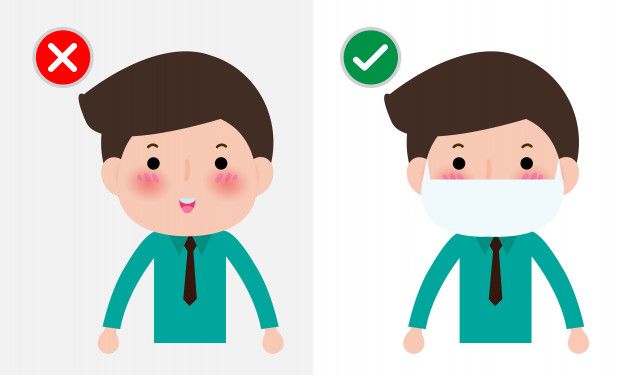In recent years, the world has witnessed a series of public health challenges, from the COVID-19 pandemic to the resurgence of diseases once thought to be under control. Among these emerging concerns is Monkeypox, a viral disease that has gained attention due to its potential for transmission and the risks it poses to global health. This article aims to provide a comprehensive understanding of Monkeypox transmission, its symptoms, prevention strategies, and how to protect yourself, drawing on the latest information from pandemic news and public health authorities.
What is Mpox?
Mpox, also known as Monkeypox, is a viral zoonotic disease, meaning it can be transmitted from animals to humans. It is caused by the Monkeypox virus, which belongs to the Orthopoxvirus genus, the same family of viruses as the variola virus, which causes smallpox. Although monkeypox is less severe and less contagious than smallpox, it has garnered significant attention due to its potential to cause outbreaks, especially in regions where it is not typically endemic.
The disease was first identified in 1958 in monkeys kept for research, hence the name Monkeypox. The first human case was recorded in 1970 in the Democratic Republic of the Congo. Since then, sporadic cases and outbreaks have occurred in various parts of Central and West Africa, where the virus is endemic. However, recent years have seen cases reported in non-endemic regions, raising concerns about global spread.
Symptoms of Monkeypox
Understanding the symptoms of Monkeypox is crucial for early detection and treatment. The symptoms of Monkeypox typically appear 5 to 21 days after exposure to the virus, with the illness lasting 2 to 4 weeks. The disease can be divided into two periods:
- Invasion Period (0-5 days): The initial symptoms include:
- Fever
- Severe headache
- Swollen lymph nodes (lymphadenopathy)
- Muscle aches (myalgia)
- Back pain
- Exhaustion
- Eruption Period (1-3 days after fever onset): Following the fever, a rash develops, often starting on the face and then spreading to other parts of the body. The rash progresses through several stages:
- Macules: Flat, red spots
- Papules: Raised bumps
- Vesicles: Fluid-filled blisters
- Pustules: Pus-filled lesions
- Scabs: The lesions eventually scab over and fall off
The presence of swollen lymph nodes is a key feature that differentiates Monkeypox from other similar illnesses, such as chickenpox or smallpox. While Monkeypox can cause severe symptoms, especially in children, pregnant women, and individuals with weakened immune systems, most cases are mild and self-limiting.
How is Monkeypox Transmitted?
Monkeypox transmission can occur through several routes, and understanding these is essential for effective prevention:
- Animal-to-Human Transmission: This occurs when a person comes into direct contact with the blood, bodily fluids, or cutaneous or mucosal lesions of infected animals. In Africa, human infections have been documented through the handling of infected monkeys, Gambian pouched rats, and squirrels. Consuming undercooked meat from infected animals is also a risk factor.
- Human-to-Human Transmission: This can occur through close contact with respiratory secretions, skin lesions of an infected person, or recently contaminated objects. The transmission can happen through:
- Direct contact with bodily fluids or lesion material
- Respiratory droplets in prolonged face-to-face contact, typically in a household setting or in healthcare facilities
- Indirect contact, such as touching objects, fabrics, or surfaces that have been contaminated with the virus from an infected person
- Vertical Transmission: Pregnant women can transmit the virus to their fetus through the placenta, leading to congenital Monkeypox.
- Sexual Transmission: While not classified as a sexually transmitted infection, Monkeypox can spread during intimate physical contact, including sexual activity, due to the close contact involved. There have been cases linked to sexual contact, which underscores the importance of being vigilant about this route of transmission.
Prevention Strategies: How to Protect Yourself
Preventing Monkeypox requires a combination of personal protective measures, public health interventions, and awareness. Here are key strategies to protect yourself and others from Monkeypox:
- Avoid Contact with Potentially Infected Animals: If you live in or are traveling to an area where Monkeypox is endemic, avoid contact with wild animals, especially those that are sick or found dead. Do not handle or consume bushmeat.
- Practice Good Hygiene: Regular handwashing with soap and water is essential, particularly after contact with animals, people, or objects that could be contaminated. If soap and water are not available, use an alcohol-based hand sanitizer.
- Use Personal Protective Equipment (PPE): Healthcare workers and individuals who are caring for someone infected with Monkeypox should use appropriate PPE, including gloves, masks, and gowns, to prevent transmission.
- Isolate Infected Individuals: If you or someone in your household is diagnosed with Monkeypox, it’s crucial to isolate the infected person to prevent the virus from spreading to others. The infected person should remain isolated until all lesions have healed and the scabs have fallen off.
- Vaccination: Smallpox vaccines have been shown to be effective in preventing Monkeypox, as the viruses are closely related. In some regions, vaccination is recommended for individuals at high risk of exposure, such as healthcare workers and laboratory personnel. The World Health Organization (WHO) recommends ring vaccination, which involves vaccinating those who have been in close contact with an infected person, to help contain outbreaks.
- Safe Sexual Practices: Given the potential for sexual transmission, practicing safe sex, including the use of condoms, can reduce the risk of spreading Monkeypox. Awareness and communication with sexual partners about symptoms and risks are also important.
- Stay Informed: Keep up to date with the latest information from public health authorities and reliable pandemic news sources. Understanding the current status of Monkeypox outbreaks, recommended precautions, and available treatments can help you make informed decisions to protect yourself and your community.
Public Health Response and Global Efforts
The response to Monkeypox outbreaks requires a coordinated effort from public health authorities, governments, and international organizations. The WHO, Centers for Disease Control and Prevention (CDC), and other health agencies are actively monitoring the situation, providing guidelines, and supporting affected countries in controlling the spread of the virus.
- Surveillance and Monitoring: Enhanced surveillance systems are critical for detecting and responding to Monkeypox cases quickly. This includes monitoring animal populations, tracking human cases, and identifying potential outbreaks.
- Public Awareness Campaigns: Educating the public about Monkeypox, its symptoms, transmission routes, and prevention measures is essential. Public health campaigns can help reduce the stigma associated with the disease and encourage people to seek medical care if they suspect they have been exposed.
- Research and Development: Ongoing research is focused on improving diagnostics, treatments, and vaccines for Monkeypox. Advances in this area are crucial for controlling current outbreaks and preventing future ones.
- International Collaboration: Given the potential for Monkeypox to spread across borders, international collaboration is key to managing outbreaks. This includes sharing data, resources, and expertise to ensure a coordinated global response.
The Role of Media and Information in Preventing Monkeypox
The media plays a pivotal role in disseminating information about public health threats like Monkeypox. Accurate reporting by trusted pandemic news sources helps raise awareness, dispel myths, and provide the public with the knowledge they need to protect themselves. However, the spread of misinformation can also create unnecessary panic or lead to unsafe practices.
To ensure that you are getting reliable information, rely on reputable news outlets and official public health websites. Social media can be a valuable tool for staying informed, but it’s important to verify the credibility of the sources and cross-check information with trusted health authorities.
Conclusion: Staying Vigilant in the Face of Emerging Health Threats
Monkeypox, while not as widespread or severe as some other viral diseases, poses a significant health risk, particularly in areas where it is not typically found. Understanding how Monkeypox is transmitted, recognizing its symptoms, and knowing how to protect yourself are crucial steps in preventing the spread of the virus.
By staying informed, practicing good hygiene, and following public health guidelines, individuals can play a vital role in controlling Monkeypox and protecting their communities. As with any public health threat, vigilance, and cooperation are key to preventing outbreaks and ensuring a healthy future.



